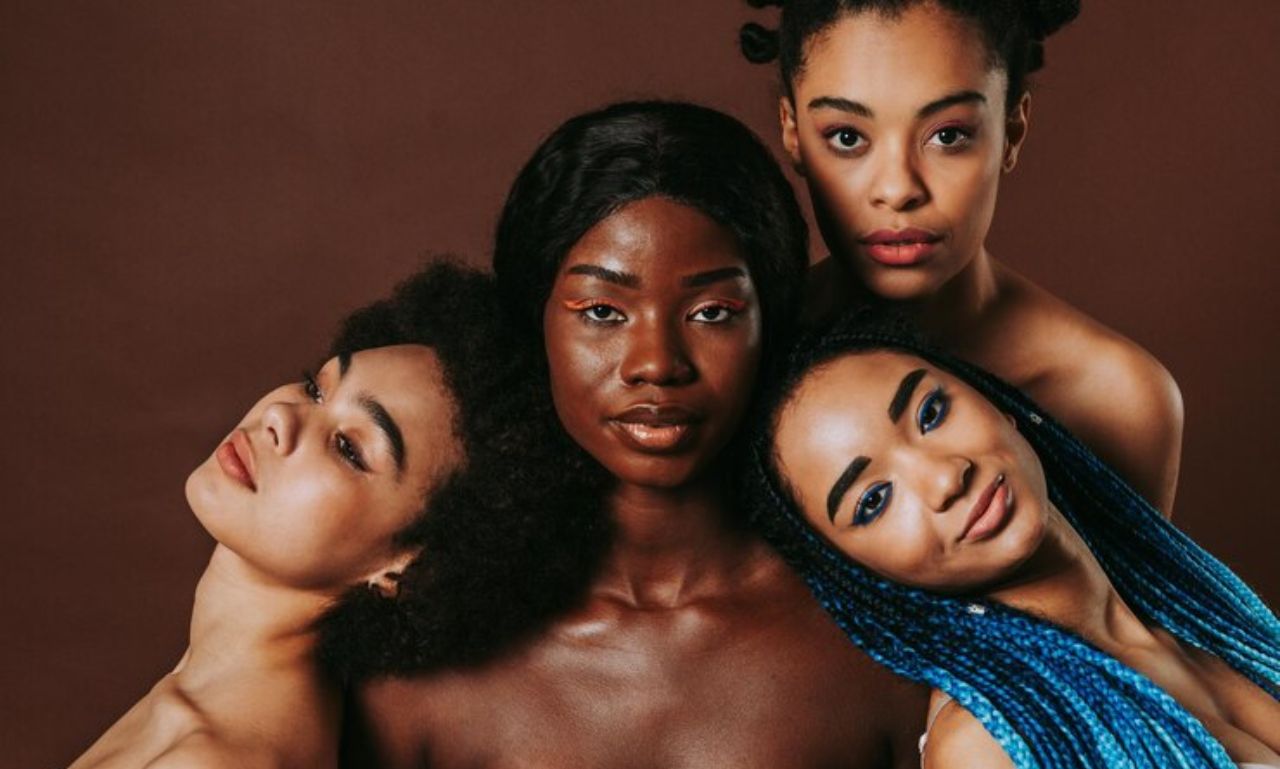Images of deep, glowing melanin—skin tones ranging from rich chocolate to ebony hues—are conjured up when one hears the words “darkest women.” Stereotypes, colorism, and societal biases have been used to try to darken the brilliance of dark-skinned women for millennia. But there has been a significant cultural movement in recent years that values diversity, unabashed self-love, and natural beauty.
The significance of melanin-rich skin, the historical struggles encountered by dark-skinned women, their depiction in contemporary media, their cultural relevance, and the ways in which the world is slowly moving toward accepting deeper shades of beauty are all covered in this article.
Historical Bias and Colorism
Darker skin has historically been despised in many communities worldwide, despite its power and attractiveness. Because of colonialism, slavery, and Eurocentric beauty standards, lighter skin was preferred and frequently associated with wealth, superiority, and desirability.
Colorism caused social division among members of the same ethnic group in many parts of the world, including the Caribbean, South Asia, and the United States, by giving those with lighter skin tones additional privileges. Dark-skinned women were marginalized as a result of this institutional preference, especially in corporate, fashion, and media settings.
Cultural Representations and Myths
Dark skin has been viewed in a variety of ways across cultures, both positively and negatively. Deep melanin was considered a sign of beauty, strength, and resiliency in several African customs. In ancient African societies like Ethiopia and Nubia, goddesses and queens were frequently portrayed as having dark skin and were regarded as strong female characters.
However, negative notions portraying dark-skinned women as less attractive or inferior were propagated by colonial powers. These beliefs endured for many centuries, influencing how people viewed value and beauty.
The Rise of Melanin Positivity
Things are beginning to change. Dark-skinned women are taking back control of their stories as a result of the globalization of the natural beauty movement and the availability of social media channels for a range of viewpoints. Millions of people have followed hashtags like #MelaninQueen, #MelaninMagic, and #BlackGirlMagic, which promote pictures, quotes, and stories that honor women with deep skin tones and the women who proudly wear them.
In addition to dispelling myths, this empowerment movement has encouraged the next generation to accept and be authentically themselves.
darkest women Breaking Barriers in Fashion and Media
Representation is important. For many years, lighter models and actresses were frequently preferred over darker-skinned women in mainstream fashion and the media. However, dark-skinned women are now featured on magazine covers, billboards, and runways all over the world.
Glass ceilings have been broken by icons like Alek Wek, Nyakim Gatwech, Duckie Thot, and Lupita Nyong’o, demonstrating that beauty can be found in all hues. Their existence has prompted big brands to be more inclusive and changed norms.
In a significant step toward fair access to beauty, even cosmetic companies are now broadening their product portfolios to accommodate darker skin tones.
Challenges That Remain
Despite these advancements, colorism and prejudice still exist. In many social circles and industries, dark-skinned women continue to face unconscious bias, microaggressions, and discrimination. Deeply ingrained skin-tone stereotypes can affect dating preferences, job opportunities, and even educational experiences. The media frequently underrepresents or misrepresents dark-skinned women by excluding them or using negative tropes. In order to fully embrace melanin-rich beauty, these patterns need to be addressed at structural levels.
Beauty Beyond Skin
It’s critical to understand that dark-skinned women’s beauty extends beyond their skin tone. It has to do with individuality, expression, culture, and legacy. Dark-skinned women have extensive traditions that range from traditional African textiles and hairstyles to spiritual rituals and storytelling.
They have made enormous but frequently unappreciated contributions to politics, literature, art, music, and science. Women who have utilized their voices and skills to improve communities and transform the world include Toni Morrison, Maya Angelou, Michelle Obama, Chimamanda Ngozi Adichie, and innumerable others.
Psychological Impact and Healing
Mental health might suffer from years of internalized bias and social rejection. A trauma that is frequently disregarded is that many darkest women experience growing up feeling “less than” due to their skin tone.
Unlearning harmful beliefs and accepting one’s own value are necessary for healing. This could be achieved through spirituality, art, therapy, community, or mentoring. In order to boost self-esteem and group resilience, safe venues for dark-skinned women to connect and exchange stories are crucial.
The Role of Education and Media Literacy
Education is the first step in combating colorism. Children should be taught to respect various skin tones and challenge media prejudices from an early age. Digital platforms, families, and schools all have a significant impact on how we view ourselves and other people.
People who are media literate are also better able to spot the subtle ways colorism appears in advertising messaging, lighting design, and casting decisions. Customers that are informed can support companies and artists that promote diversity beauty and demand better representation.
Global Perspectives
Colorism is not specific to any one area. Fairness creams have long dominated the beauty industry in South Asia. Afro-descendants frequently experience cultural erasure in Latin America. The yearning for lighter skin continues to fuel the deadly habit of skin bleaching in some parts of Africa.
A global strategy is needed to address the challenges faced by women of color. Although cultural background is important, the objective is still the same: to reinforce that darkness is valuable, strong, and beautiful.
Redefining Beauty Standards
There is no universal definition of beauty. It is very personal, varied, and complex. More than just increasing visibility, the campaign to accept dark-skinned women aims to redefine what society views as attractive, strong, and deserving of notice.
darkest women flourish when they are given the freedom to be delicate, nuanced, and appreciated. Their brightness shows through when they aren’t confined to boxes or kept quiet by outmoded conventions, and the world needs more of that brilliance.
Embracing the Future
darkest women are openly asserting their place in the future, which belongs to the brave. Their presence is significantly changing culture, whether through activism, enterprise, artistic expression, or education.
More prominent role models that resemble them and fully embrace who they are are being raised by younger generations. A world where every girl can grow up thinking that her dark complexion is a gift rather than a burden is possible thanks to this change.
Conclusion
Women of color are not all the same. They have different cultures, different beliefs, and different methods of expressing themselves. Their resilience—the ability to shine through the darkness the world attempts to cast—is what binds them together.
To discuss “darkest women: Embracing Melanin-Rich Beauty, Strength, and Identity: Embracing Melanin-Rich Beauty, Strength, and Identity” is to acknowledge a range of richness, identity, and power rather than to draw attention to a single characteristic. It honors melanin and all the power it possesses.
There is still a long way to go until complete equality and acceptance are achieved, but one thing is certain: women with dark complexion are attractive.










